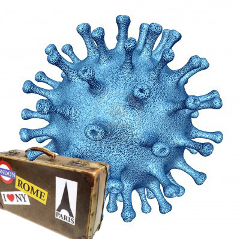Artificial virus enters cells
 Researchers have built artificial virus-like particles capable of entering human cells to perform tasks such as gene editing.
Researchers have built artificial virus-like particles capable of entering human cells to perform tasks such as gene editing.
Scientists have developed a groundbreaking method for constructing artificial virus-like vectors (AVVs), according to a study published in Nature Communications.
These nanomaterials, which offer high capacity and customisation, hold great promise for gene therapy and personalised medicine.
Viruses possess remarkable replication and assembly abilities, making them efficient biological machines.
While natural human viruses like lentiviruses have been modified in the past to deliver therapeutic DNA or RNA in animals, their delivery capabilities were limited, and safety concerns remained.
To overcome these limitations, researcher Venigalla Rao and his team turned to bacteriophage T4, a virus that infects bacteria, as the basis for their AVVs.
The researchers successfully designed AVVs with significant internal space for carrying material and a large surface area for programming and delivering therapeutic biomolecules.
In proof-of-concept experiments, the AVVs effectively delivered the full-length dystrophin gene into human cells in laboratory settings, showcasing their potential for molecular operations to remodel the human genome.
Notably, the AVVs can be produced inexpensively and at a high yield, remaining stable for several months.
While further safety assessments are required, the research team envisions future applications of this technology in clinical settings for the treatment of various human diseases and rare disorders.
The study represents a significant step forward in the development of advanced nanomaterials that could revolutionise gene therapy and open doors to more personalised medical interventions.







 Print
Print